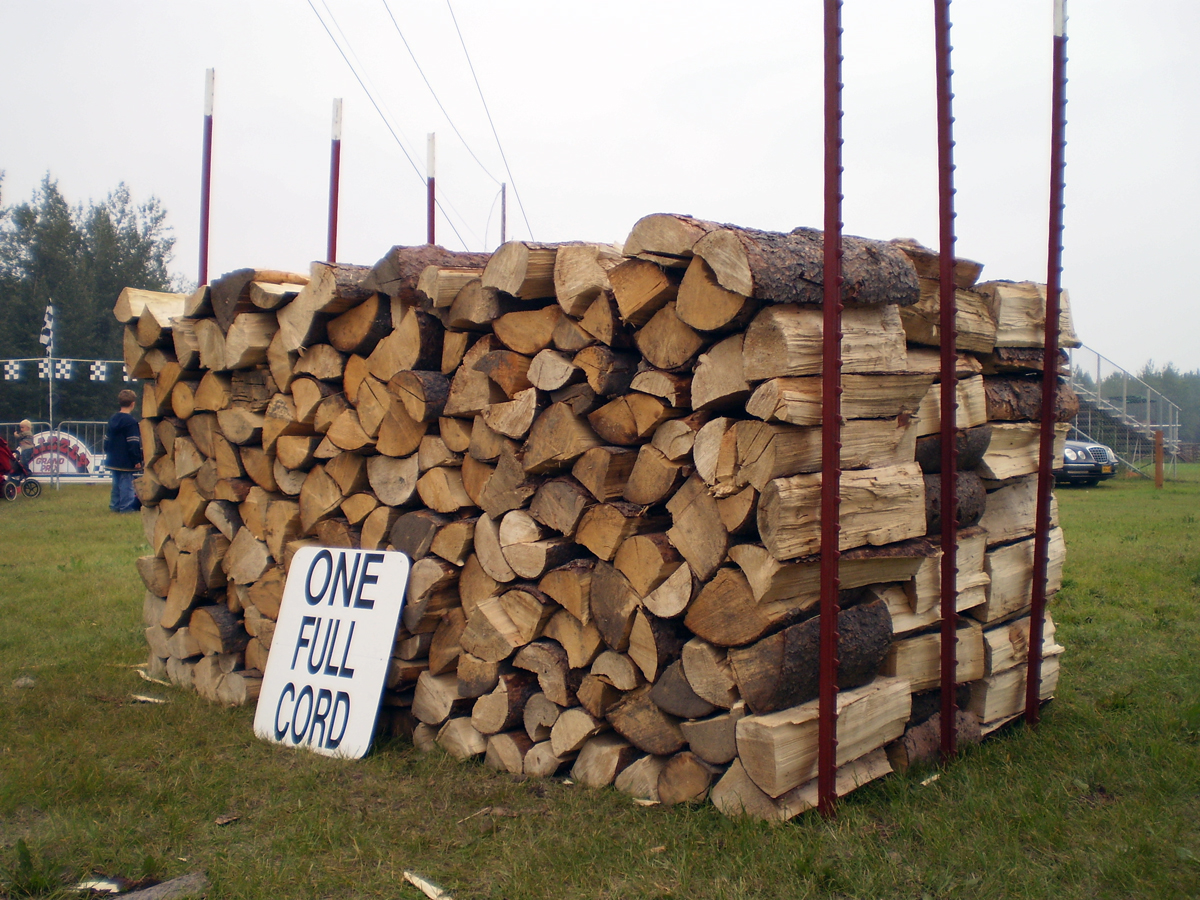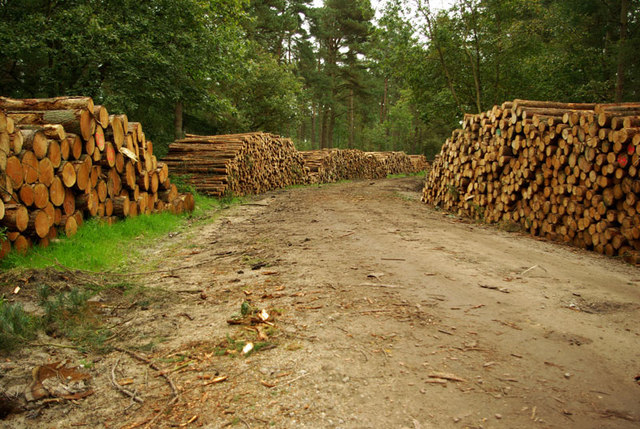|
Stere
The stere or stère (st) is a unit of volume in the original metric system equal to one cubic metre. The stere is typically used for measuring large quantities of firewood or other cut wood, while the cubic meter is used for uncut wood. The name was coined from the Greek στερεός ''stereós'', "solid", in 1795 in France as a metric analogue to the cord. The unit was introduced to remove regional disparities of this former unit, for which the length could vary greatly from 6 to 13.5 m. It is not part of the modern metric system (SI) and is no longer a legal unit in France, but remains used in the commerce of firewood. Background The correspondence between stere and cubic meter of stacked wood is imprecise because it depends on the length of the logs used and on how irregular they are. The stere corresponds to 1 m3 of wood, made exclusively with logs of 1 m in length, all stacked parallel and neatly arranged. If the length of the logs is less than 1 m, the volume of visibl ... [...More Info...] [...Related Items...] OR: [Wikipedia] [Google] [Baidu] |
Cord (unit Of Volume)
The cord is a unit of measure of dry volume used to measure firewood and pulpwood in the United States and Canada. A cord is the amount of wood that, when "racked and well stowed" (arranged so pieces are aligned, parallel, touching and compact), occupies a volume of . This corresponds to a well-stacked woodpile high, wide, and deep; or any other arrangement of linear measurements that yields the same volume. The name ''cord'' probably comes from the use of a cord or string to measure it. The cord-foot was a US unit of volume for stacked firewood, four feet long, four feet wide and one foot high—equal to one eighth of a cord. Symbol for the unit was cd-ft. Definitions In Canada, the cord is legally defined by Measurement Canada. The cord is one of three legal standards for the sale of firewood in Canada: stacked cubic metre (or stere), cubic foot, and cord. The preferred unit of measurement for firewood is the stacked cubic metre. In the United States, the cord is ... [...More Info...] [...Related Items...] OR: [Wikipedia] [Google] [Baidu] |
France
France (), officially the French Republic ( ), is a country primarily located in Western Europe. It also comprises of overseas regions and territories in the Americas and the Atlantic, Pacific and Indian Oceans. Its metropolitan area extends from the Rhine to the Atlantic Ocean and from the Mediterranean Sea to the English Channel and the North Sea; overseas territories include French Guiana in South America, Saint Pierre and Miquelon in the North Atlantic, the French West Indies, and many islands in Oceania and the Indian Ocean. Due to its several coastal territories, France has the largest exclusive economic zone in the world. France borders Belgium, Luxembourg, Germany, Switzerland, Monaco, Italy, Andorra, and Spain in continental Europe, as well as the Netherlands, Suriname, and Brazil in the Americas via its overseas territories in French Guiana and Saint Martin. Its eighteen integral regions (five of which are overseas) span a combined area of ... [...More Info...] [...Related Items...] OR: [Wikipedia] [Google] [Baidu] |
Litre
The litre (international spelling) or liter (American English spelling) (SI symbols L and l, other symbol used: ℓ) is a metric unit of volume. It is equal to 1 cubic decimetre (dm3), 1000 cubic centimetres (cm3) or 0.001 cubic metre (m3). A cubic decimetre (or litre) occupies a volume of (see figure) and is thus equal to one-thousandth of a cubic metre. The original French metric system used the litre as a base unit. The word ''litre'' is derived from an older French unit, the '' litron'', whose name came from Byzantine Greek—where it was a unit of weight, not volume—via Late Medieval Latin, and which equalled approximately 0.831 litres. The litre was also used in several subsequent versions of the metric system and is accepted for use with the SI,Bureau International des Poids et ... [...More Info...] [...Related Items...] OR: [Wikipedia] [Google] [Baidu] |
Units Of Volume
A unit of volume is a unit of measurement for measuring volume or capacity, the extent of an object or space in three dimensions. Units of capacity may be used to specify the volume of fluids or bulk goods, for example water, rice, sugar, grain or flour. Units According to the SI system, the base unit for measuring length is the metre. The SI unit of volume is thus the cubic metre, which is a derived unit, where: at nist.gov. Retrieved 29 June 2022. 1 m3 = 1 m • 1 m • 1 m. Comparison Forestry and timber industry British Commonwealth * Hoppus, cubic foot measure used in the Briti ...[...More Info...] [...Related Items...] OR: [Wikipedia] [Google] [Baidu] |
Forestry Commission
The Forestry Commission is a non-ministerial government department responsible for the management of publicly owned forests and the regulation of both public and private forestry in England. The Forestry Commission was previously also responsible for Forestry in Wales and Scotland. However, on 1 April 2013, Forestry Commission Wales merged with other agencies to become Natural Resources Wales, whilst two new bodies ( Forestry and Land Scotland and Scottish Forestry) were established in Scotland on 1 April 2019. The Forestry Commission was established in 1919 to expand Britain's forests and woodland, which had been severely depleted during the First World War. The Commission bought large amounts of agricultural land on behalf of the state, eventually becoming the largest manager of land in Britain. Today, the Forestry Commission is divided into three divisions: Forestry England, Forestry Commission and Forest Research. Over time the purpose of the Commission broadened to i ... [...More Info...] [...Related Items...] OR: [Wikipedia] [Google] [Baidu] |
International System Of Units
The International System of Units, known by the international abbreviation SI in all languages and sometimes pleonastically as the SI system, is the modern form of the metric system and the world's most widely used system of measurement. Established and maintained by the General Conference on Weights and Measures (CGPM), it is the only system of measurement with an official status in nearly every country in the world, employed in science, technology, industry, and everyday commerce. The SI comprises a coherent system of units of measurement starting with seven base units, which are the second (symbol s, the unit of time), metre (m, length), kilogram (kg, mass), ampere (A, electric current), kelvin (K, thermodynamic temperature), mole (mol, amount of substance), and candela (cd, luminous intensity). The system can accommodate coherent units for an unlimited number of additional quantities. These are called coherent derived units, which can always be represented ... [...More Info...] [...Related Items...] OR: [Wikipedia] [Google] [Baidu] |
Metric Units
Metric units are units based on the metre, gram or second and decimal (power of ten) multiples or sub-multiples of these. The most widely used examples are the units of the International System of Units (SI). By extension they include units of electromagnetism from the CGS and SI units systems, and other units for which use of SI prefixes has become the norm. Other unit systems using metric units include: * International System of Electrical and Magnetic Units * Metre–tonne–second (MTS) system of units * MKS system of units (metre, kilogram, second) Metric units that are part of the SI The first group of metric units are those that are at present defined as units within the International System of Units (SI). In its most restrictive interpretation, this is what may be meant when the term ''metric unit'' is used. The SI defines 30 named units and associated symbols: * The unit one (1) is the unit of a quantity of dimension one. * The second (s) is the unit of time. * ... [...More Info...] [...Related Items...] OR: [Wikipedia] [Google] [Baidu] |
Board Foot
The board foot or board-foot is a unit of measurement for the volume of lumber in the United States and Canada. It equals the volume of a length of a board, one foot wide and thick. Board foot can be abbreviated as FBM (for "foot, board measure"), BDFT, or BF. A thousand board feet can be abbreviated as MFBM, MBFT, or MBF. Similarly, a million board feet can be abbreviated as MMFBM, MMBFT, or MMBF. Until 1970s in Australia and New Zealand the terms super foot and superficial foot were used with the same meaning. One board foot equals: * 1 ft × 1 ft × 1 in * 12 in × 12 in × 1 in * 144 in3 * 1/12 ft3 * ≈ * ≈ * ≈ or steres * 1/1980 Petrograd Standard of board The board foot is used to measure rough lumber (before drying and planing with no adjustments) or planed/surfaced lumber. An example of planed lumber is softwood 2 × 4 lumber sold by large lumber retailers. The 2 × 4 is actually only , but the dimensions for the lumber when purchased wholesal ... [...More Info...] [...Related Items...] OR: [Wikipedia] [Google] [Baidu] |
Forest Product
A forest product is any material derived from forestry for direct consumption or commercial use, such as lumber, paper, or fodder for livestock. Wood, by far the dominant product of forests, is used for many purposes, such as wood fuel (e.g. in form of firewood or charcoal) or the finished structural materials used for the construction of buildings, or as a raw material, in the form of wood pulp, that is used in the production of paper. All other non-wood products derived from forest resources, comprising a broad variety of other forest products, are collectively described as non-timber forest products (NTFP). Non-timber forest products are viewed to have fewer negative effects on forest ecosystem when providing income sources for local community. Globally, about 1.15 billion ha of forest is managed primarily for the production of wood and non-wood forest products. In addition, 749 million is designated for multiple use, which often includes production. Worldwide, the area of ... [...More Info...] [...Related Items...] OR: [Wikipedia] [Google] [Baidu] |




